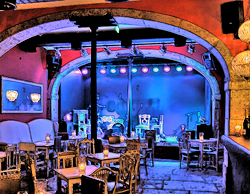
Amplitude response is the parameter commonly referred to as the frequency response. Amplitude is one kind of response relative to frequency. Phase is another kind of frequency response. Non-linear phase response can be analogous to time delay or impulse response (risetime).
For vocal microphones, or other applications involving unusually high gain, a differential microphone pair is appropriate. When contemplating the purchase of omni microphones for this purpose, be wary. Review the manufacturer’s data sheet to determine that the microphone is a pressure transducer with flat response for both near and far sound sources.
This should not be confused with a pressure gradient microphone, which responds to the difference in pressure between two diaphragms, and which is more sensitive to proximity effects. However, it is important to remember that not all performances are able to accommodate themselves to differential microphone properties.
Some popular omnis have acoustic or electrical equalization in them to obtain a response that the manufacturer judges is popular with engineers. Unidirectional microphones exhibit ragged off-axis response, often with harmonically related peaks and dips.
Your ear may perceive this as being flat, but it doesn’t help the feedback threshold. Since more of inter-microphone isolation is due to proximity than to the directionality of the microphone, little is to be lost and much is to be gained with omnis. As a rule, if you get one mic four times closer to a sound source than another mike, the other mic essentially isn’t there.
An additional advantage is that omni microphones are less expensive and more rugged than comparable directional microphones. This is an important real life, sound reinforcement consideration.
Percussion instruments sometimes require a distant, directional microphone technique. Only the highest quality dynamic microphone should be considered here. Condensers tend to clip, and ribbons are too delicate. (Editor’s Note: In the intervening years since 1973, condenser mic use has become quite widespread, in percussion and other stage micing.)
Dynamic mics generally do the best job, providing long life and good sound quality. In sound reinforcement, overhead drum microphones are often more trouble than they are worth. It can be assumed that there is excessive cymbal sound already reflecting off the heads of the drums, a sound that overhead mics will pick up disproportionately.
High-hat cymbals can be picked up by a non-directional or bi-directional microphone. The snare drum can be assigned to the same me by placing the mike somewhere between them in a position, which gives the most desired balance.
Staging
Set changes are always traumatic experiences if they are not carefully planned. The results of a poor set change can foul up the sound of the entire following set. Disorganized microphone setups and cabling can trip up the performers, causing both distraction and anger.
A valuable suggestion to begin with is to use one master multi-pair snake for routing all microphone lines from some central location on the stage to the mixer. Smaller, multi-pair sub-snakes for drums and for vocals will also reduce the effort and confusion.
Immediately after the set, all the microphones used for that set should be unplugged and gotten out of the way of stagehands and equipment men. The mics can be removed to the side or front of the stage, and are then replaced when the next setup is complete:This job should be assigned to one person. Most club stages are small, and any increase in the freedom of movement will be appreciated.
Also, it is remarkable how many microphones are saved from the need to be shipped back to the factory for complete repair as a result of having been knocked over, or trampled on during set changes. This little extra seems well worth the effort.
